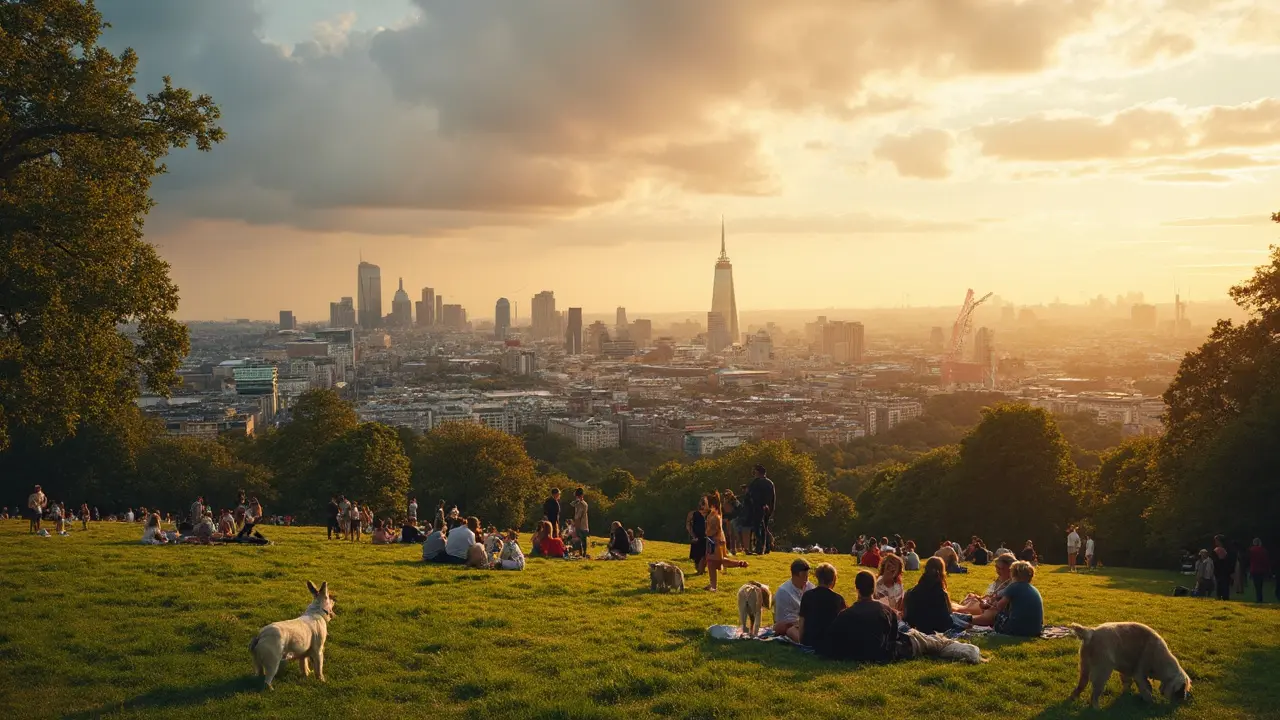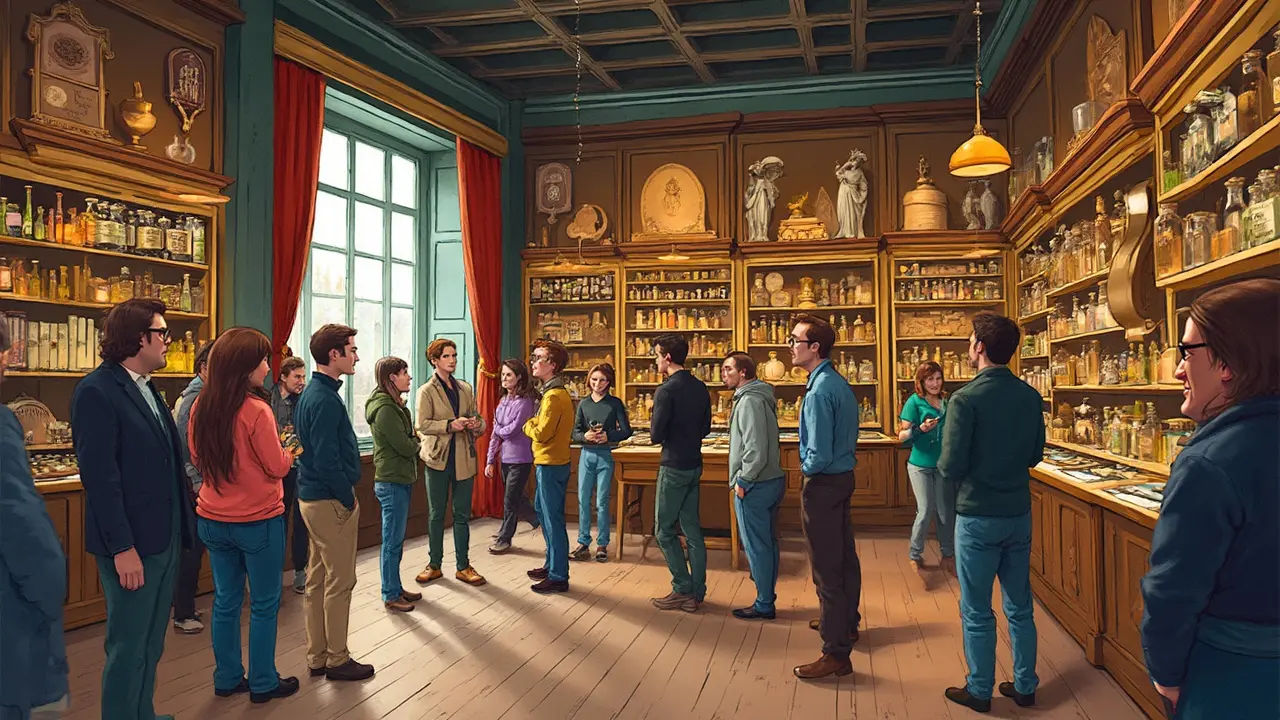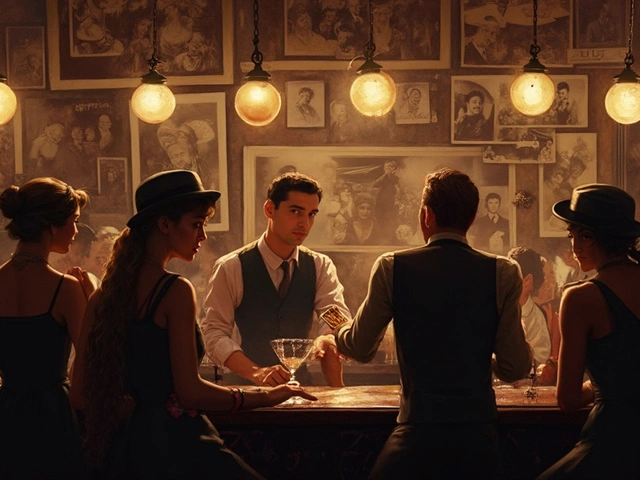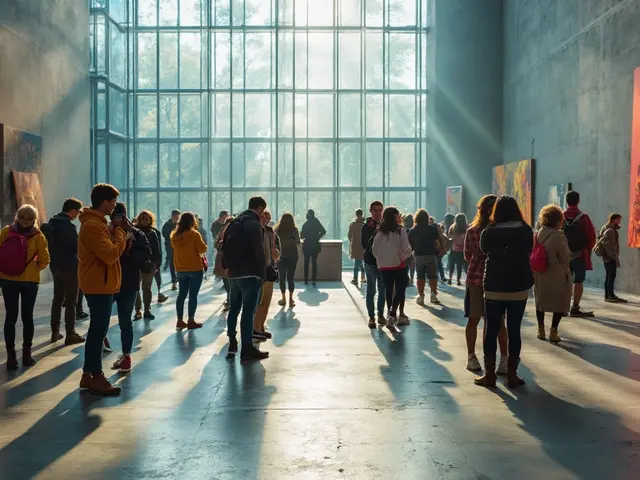Think you’ve seen everything London has to offer? Even locals get surprised by what’s tucked away around the next street corner. Everyone knows the Tower Bridge, but have you ducked into Leighton House Museum in Kensington or tried a sunrise walk across Waterloo Bridge (the views, unbeatable)?
There’s a real art to exploring London’s attractions—timing, insider shortcuts, and knowing where the queue is actually worth it. The trick is mixing classic sights with stops only Londoners recommend. Don’t just tick off tourist spots because they’re famous on Instagram. Instead, ask yourself, did I ever grab a salt beef bagel at 4 AM on Brick Lane, or take the Emirates Air Line cable car for a weirdly fun commute?
Never mind that West End theatres are packed—there’s almost always a decent last-minute ticket at the TKTS booth in Leicester Square. And if you think all markets are the same, wait until you get lost in the alleys behind Maltby Street Market or haggle at Columbia Road Flower Market (go late, prices tumble). Every corner in London hides a story or a shortcut, and Londoners love sharing them.
- Beyond the Big Names: Hidden London Gems
- Iconic Landmarks Every Londoner Should Experience
- Markets, Food, and Local Flavours
- Unmissable Green Spaces and Views
- Nightlife, Culture, and Events
Beyond the Big Names: Hidden London Gems
If you think you’ve done all the London attractions just because you’ve snapped the usual sights, think again. Some of London’s best finds are off the main tourist trail, but locals rave about them. For a start, Sir John Soane’s Museum in Holborn is a tiny maze packed with everything from ancient sarcophagi to quirky art—and it’s free, but hardly ever crowded. Another real winner? The Seven Noses of Soho. It’s exactly what it sounds like: a weird artistic treasure hunt that’ll take you through one of London’s buzziest areas while keeping your eyes peeled for sculpted noses on old walls.
If you want a day out with fewer crowds and more genuine London, head to Little Venice. Walk along Regent’s Canal, watch canal boats drift by, and grab a coffee from a waterside café. Want something completely different? God’s Own Junkyard in Walthamstow is a mind-blowing warehouse packed with neon signs—perfect for photos, and actually kind of peaceful if you go early. On Sundays, Wilton’s Music Hall in Whitechapel sometimes does pay-what-you-can events, so you can catch live music or quirky cabaret without breaking your wallet.
Need data to convince your mates it’s worth skipping the tourist queues? Here’s a quick look at lesser-known spots and their average monthly visitors compared to London’s top three sights:
| Location | Average Monthly Visitors |
|---|---|
| Sir John Soane’s Museum | 22,000 |
| God’s Own Junkyard | 15,000 |
| Wilton’s Music Hall | 18,000 |
| British Museum | 680,000 |
| London Eye | 530,000 |
| Tower of London | 450,000 |
If you want a few more local tips, try:
- Checking out Postman’s Park (near St Paul’s), a tiny, oddly peaceful patch of green with a moving memorial to heroic Londoners.
- Ducking under the city at Clapham’s bunker-like Cinema Museum—perfect for film buffs and history nerds.
- Grabbing craft beer in the railway arches of Bermondsey’s Maltby Street, especially before noon on a Saturday (less crowded, easier to score a table).
The real trick? Mix these places into your city routine. Some are close enough to combine in one day out. And that’s how you end up with stories that most tourists never hear about.
Iconic Landmarks Every Londoner Should Experience
Look, you can live in the city for years, but you can't really say you know London until you've done the essentials. Some are places you walk by every week—others, you just never got around to visiting. Even if you think you’ve seen them all, ask yourself if you’ve actually gone inside, taken a tour, or tried them at night when the crowds are gone. This is less about ticking boxes and more about seeing the city with fresh eyes.
Here’s a quick crash course on a few classic London attractions. Yes, Big Ben is nice for photos, but the real magic? Hearing those bells ring live on the hour. At the Tower of London, don’t just stare at the outside—book a Yeoman Warder tour. You’ll get the best stories about royal scandals and botched prison escapes straight from the folks who live there. Tickets can go fast on weekends, so book ahead online.
- St Paul’s Cathedral: Not just for tourists. Climb the dome—nearly 530 steps—but the view over the Thames is worth every bit of leg burn. Locals go for the Whispering Gallery. Try it: one person whispers against the wall, and another hears it clear as day on the opposite side.
- The Shard: It’s the tallest building in the UK, and the View from the Shard is seriously spectacular, especially at sunset. Hack: there’s no need to pay for the observation deck if you book a drink at one of the bars a few floors down—same epic view, just fancier cocktails.
- Buckingham Palace: Even if you missed the King, Changing the Guard happens most Mondays, Wednesdays, Fridays, and Sundays at 11:00 am. Pro tip: watch from the Victoria Memorial—better photos, and you skip the tightest crowds at the gates.
- The British Museum: This one’s free, and it’s open until 8:30 pm on Fridays. Late nights are the best time if you want the Rosetta Stone all to yourself for a bit—plus, easy access to the 4,000-year-old Egyptian mummies. Check the museum’s website for highlight tours; some are only twenty minutes long, but you’ll learn more than from hours of wandering.
You’ll notice how most of these places get busy. Check out the average annual visitor stats for these top spots:
| Landmark | Average Annual Visitors |
|---|---|
| The British Museum | ~5.8 million |
| St Paul’s Cathedral | ~1.5 million |
| Buckingham Palace (Summer Opening) | ~0.5 million |
| The Shard | ~2 million |
| Tower of London | ~2.9 million |
If you want to avoid the crowds, earlier is always better—except for the British Museum, where Friday nights are strangely underrated. Try cycling or walking between landmarks; you’ll skip the Tube, find street food you wouldn’t expect, and London just feels smaller that way. Next time you pass something iconic on your commute, maybe hop off and take a look inside. It’s your city—why not see it all?

Markets, Food, and Local Flavours
If you want to taste London, start at the markets. The big one everyone talks about is Borough Market, and for good reason. It’s been around in some form for nearly 1,000 years. Arrive before noon for fresh doughnuts at Bread Ahead, legendary sausage rolls at Ginger Pig, and enough cheese samples to skip lunch. Many stalls import directly from small producers, which is why the sourdough, olives, and pastries taste better than your average supermarket bag.
Looking for something more East End? Head to Brick Lane on a Sunday. The main strip is crammed with bagel shops (don’t miss Beigel Bake, open 24/7) and rows of vintage clothing pop-ups. Columbia Road Flower Market is a short walk away—yes, it’s about flowers, but the coffee shops and salted caramel brownies are what locals really line up for. Watch out for the post-3pm markdowns if you’re bargain-hunting.
Try Maltby Street Market for a totally different vibe. It’s smaller, under railway arches near Bermondsey, and packs more flavour punch per square foot than anywhere else. The Little Bird gin bar is a local “secret,” and you can get serious smoked meats at The Beefsteaks. Plus, the crowds are more manageable and the vibe’s just more laid-back compared to central markets.
Let’s not forget about flat whites and fish and chips. The UK’s fish and chips used to get a bad rap, but spots like Poppies (with nostalgia décor and locally-sourced fish) and Golden Union have changed that. For coffee snobs, Monmouth Coffee (at Borough and Covent Garden) consistently wins fan polls for best roast in town. Even Pret gets a nod for their croissants and easy pre-work caffeine fixes.
Here’s a look at how a few of London’s famous markets stack up (by reported average weekly visitors and top dish you shouldn’t skip):
| Market | Area | Avg. Weekly Visitors | Must-Try Dish |
|---|---|---|---|
| Borough Market | London Bridge | 90,000 | Brindisa Chorizo Roll |
| Brick Lane Market | Shoreditch | 65,000 | Salt Beef Bagel |
| Maltby Street Market | Bermondsey | 10,000 | The Beefsteaks Steak Sandwich |
| Columbia Road Flower Market | Bethnal Green | 8,000 | Salted Caramel Brownie |
If you’re trying to hit as many of the best London attractions as possible, plan around market opening days—some (like Maltby Street) only run on weekends, and you’ll want to avoid the midday crush. Bring cash, carry a tote bag for food hauls, and don’t bother counting calories.
Unmissable Green Spaces and Views
Londoners are spoiled for choice when it comes to parks. If you want a classic picnic spot, head to Regent’s Park. With over 400 acres, it’s big enough for summer football matches and quiet corners where you’ll forget you're in the city at all. The Rose Garden here is peak season from May to July, and there’s an open-air theatre with shows if you want something different.
Okay, everyone’s heard of Hyde Park, but try skipping the Speaker’s Corner crowds and walk south to Kensington Gardens. The Serpentine Gallery’s basically free modern art, and you can spot the Peter Pan statue tucked by the lake—Londoners use it as a photo finish point on their jogs.
After a proper hill? Parliament Hill on Hampstead Heath is your winner for skyline views. Early morning or sunset is the best bet. Take some coffee up, and you’ll see everything from the Shard to Canary Wharf. It does get muddy after rain, so don’t wear new trainers.
Richmond Park is famous for its wild deer, but don’t just stick to the main paths. Bring a bike if you can—cycling here feels like cheating the city altogether. The Isabella Plantation is full of neon azaleas from April, and it’s less crowded than the obvious spots.
- Primrose Hill: Small, easy climb, proper view of central London. Handlebar Café does cracking takeaway coffee.
- Greenwich Park: Don’t skip the Royal Observatory—stand with one foot in each hemisphere. The view from by the statue of General Wolfe is pretty epic, especially at dusk.
- Sky Garden: Free tickets, but they go quick. Massive indoor space up the Walkie-Talkie with crazy views—plus decent snacks and WiFi if you’re working remotely.
People often ask, how many parks does London have? The answer: over 3,000 green spaces, making up about 18% of the city. That’s more parkland per person than New York or Paris. Check out this snapshot of some top spots:
| Park | Area (Acres) | Best For |
|---|---|---|
| Hyde Park | 350 | Boating, Events, Open Air Swimming |
| Regent’s Park | 410 | Picnics, Sport, Rose Garden |
| Hampstead Heath | 790 | Wild Swimming, Walking, Panoramic Views |
| Richmond Park | 2,500 | Deer Spotting, Cycling, Nature Walks |
| Greenwich Park | 180 | History, City Views, Picnic with a View |
London isn’t just about concrete, and sometimes the best London attractions are green and free. Bring snacks, a mate, and an umbrella—just in case.

Nightlife, Culture, and Events
London’s nightlife is never dull—there’s always something going on, whether you’re up for a big night or just want a drink after work. For live music, the Roundhouse in Camden and Brixton Academy always pull major names and local acts you actually want to see. Clubs like Fabric and XOYO aren’t just for tourists; locals swear by their weeknight lineups.
The London attractions scene is just as lively when it comes to culture and events. The West End takes all the attention, but don’t forget the National Theatre on the South Bank, where affordable tickets are easier to find if you book ahead, especially if you’re under 25 (the Entry Pass scheme is a steal). If you’re more about art than theatre, the Whitechapel Gallery runs regular late-night openings, with free talks and DJs.
Warehouse parties aren’t just a thing in Shoreditch—check out Printworks (when it’s open for events) for unmatched sound, or hunt down secret gigs through Sofar Sounds. On the other end, for something more chill, try poetry slams at the Royal Festival Hall café or comedy at Angel Comedy (always free, if you can grab a seat early).
When it comes to annual events, here’s what should be on your calendar:
- Notting Hill Carnival: End of August, wild street parties, unbeatable Caribbean food and music.
- London Film Festival: Every October, new releases and celeb sightings at BFI Southbank.
- Winter Wonderland: Starts November in Hyde Park—yes, it’s touristy, but the mulled wine and giant wheel are worth a laugh.
- West End Live: Free musical performances in Trafalgar Square, usually in June.
- Wimbledon: Even if you hate tennis, the excitement, Pimms, and strawberries in local pubs is worth it.
Want numbers? Here’s a quick look at how busy things get at some famous events and venues:
| Event/Venue | Average Attendance (per year) |
|---|---|
| Notting Hill Carnival | 2 million |
| Brixton Academy | 500,000 |
| Winter Wonderland | 2.5 million |
| London Film Festival | 180,000 |
If you hate queues, book smaller venue tickets in advance or dodge the big Saturday crowds. Off-peak nights—like Mondays for comedy or Wednesdays for live music—are often cheaper and less crammed. Basically, there’s no wrong night out in London, just smarter ways to get the most out of it.


